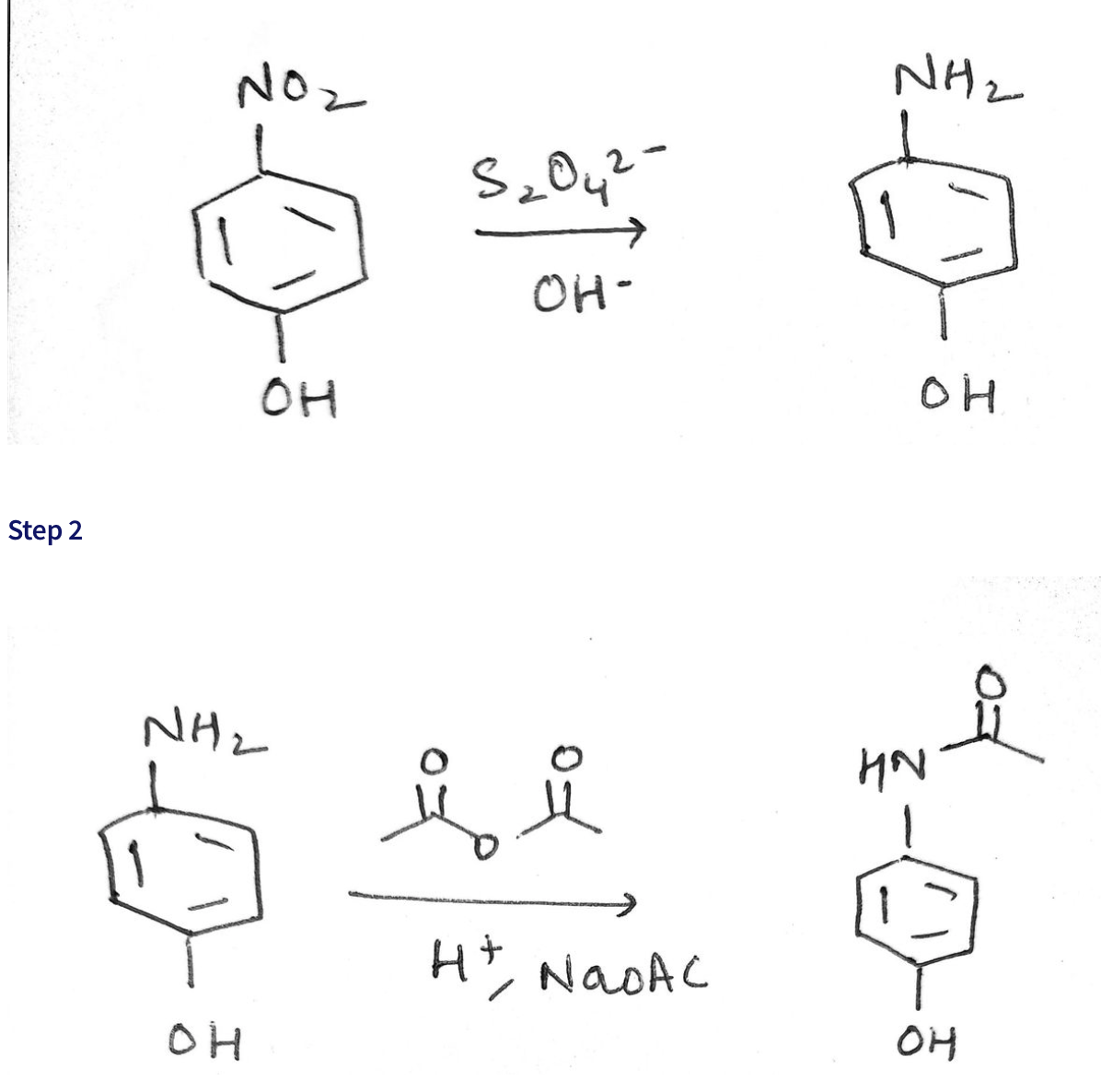WITH THIS PROCEDURE BELOW for a different reaction, FILL OUT A REAGENT TABLE KEEPING THE MOLES/MOLES EQUIVALENT THE SAME AS THE ORGINAL PROCEDURE (in procedure) FOR THE new REACTION ATTACHED (file) reagent tables hould includemolecular weight, mass, volume, moles, and moles equivalent PROCEDURE 5-Amino-2-chlorophenol To a 250 mL Erlenmeyer flask containing a Teflon coated magnetic stirring bar was added 85% sodium hydrosulfite (14.0 g), water (80 mL), and 20% (mass/vol) sodium hydroxide solution (16 mL). The mixture was magnetically stirred until a clear solution was obtained, then solid 2-chloro-5-nitrophenol (2.75 g) is added in one portion. The mixture was stirred at room temperature for 20 minutes then heated to a gentle boil for about two minutes during which time the yellow color of the solution disappeared, indicating complete reduction of the nitro function. The reaction mixture was cooled to room temperature and then placed in an ice-water bath for about 10 minutes. The crude product was collected by vacuum filtration, washed with a small volume of ice water and then used immediately in the next step. 4-chloro-3-hydroxyacetanilide The 5-amino-2-chlorophenol was transferred to a 6 inch test tube and water (8 mL) was added. The mixture was stirred vigorously with a stirring rod and concentrated hydrochloric acid was added dropwise until the solid just dissolves.1 Saturated aqueous sodium acetate (2.0 mL) was added, and then acetic anhydride (2.50 mL) was added in one portion. The reaction mixture was stirred for about one minute, allowed to stand at room temperature for an additional ten minutes, and then placed in an ice- water bath.2 The crude product was isolated by vacuum filtration, washed with ice water and air dried. Further purification was achieved by recrystallization from water (about 8 mL water per gram crude product). The product was characterized by TLC (95% ethyl acetate, 5% acetic acid) melting point and IR
WITH THIS PROCEDURE BELOW for a different reaction, FILL OUT A REAGENT TABLE KEEPING THE MOLES/MOLES EQUIVALENT THE SAME AS THE ORGINAL PROCEDURE (in procedure) FOR THE new REACTION ATTACHED (file)
reagent tables hould includemolecular weight, mass, volume, moles, and moles equivalent
PROCEDURE
5-Amino-2-chlorophenol
To a 250 mL Erlenmeyer flask containing a Teflon coated magnetic stirring bar was added 85% sodium hydrosulfite (14.0 g), water (80 mL), and 20% (mass/vol) sodium hydroxide solution (16 mL). The mixture was magnetically stirred until a clear solution was obtained, then solid 2-chloro-5-nitrophenol (2.75 g) is added in one portion. The mixture was stirred at room temperature for 20 minutes then heated to a gentle boil for about two minutes during which time the yellow color of the solution disappeared, indicating complete reduction of the nitro function. The reaction mixture was cooled to room temperature and then placed in an ice-water bath for about 10 minutes. The crude product was collected by vacuum filtration, washed with a small volume of ice water and then used immediately in the next step.
4-chloro-3-hydroxyacetanilide
The 5-amino-2-chlorophenol was transferred to a 6 inch test tube and water (8 mL) was added. The mixture was stirred vigorously with a stirring rod and concentrated hydrochloric acid was added dropwise until the solid just dissolves.1 Saturated aqueous sodium acetate (2.0 mL) was added, and then acetic anhydride (2.50 mL) was added in one portion. The reaction mixture was stirred for about one minute, allowed
to stand at room temperature for an additional ten minutes, and then placed in an ice- water bath.2 The crude product was isolated by vacuum filtration, washed with ice water and air dried. Further purification was achieved by recrystallization from water (about 8 mL water per gram crude product). The product was characterized by TLC (95% ethyl acetate, 5% acetic acid) melting point and IR.

Step by step
Solved in 5 steps with 4 images









